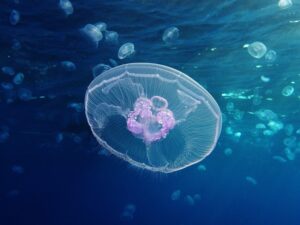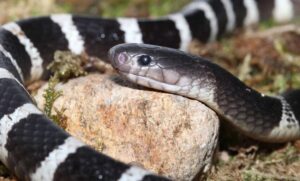Turtles are a very peculiar reptile, especially because of their shells. “Why do turtles have shells?“, “When did the turtle shell appear?” and similar questions have been debated by paleontologists for centuries. In the following article, KnowAllAnimals invites you to learn about how turtles evolved and developed their unique shells.
1. Why Do Turtles Have Shells?
Before we can answer the question, “Why do turtles have shells?”, let’s first explore some of the questions surrounding this issue. Specifically:
1.1. A Fossil Discovery in the Late 19th Century Ignited the Debate
In 1887, a German scientist announced the discovery of an interesting animal fossil. It was clearly a turtle, with a thick shell on its back and a flat plastron on its belly. It met all the criteria to be called a turtle, except that it had not yet developed the ability to retract its head into its shell like modern turtles.
This was not only a new genus of turtle; it was the oldest turtle species discovered at the time. It was named Proganochelys, and modern science has determined that it lived 210 million years ago, in the late Triassic period. The fact that this turtle was found with an intact shell helped identify it as a turtle but also left many questions about how that shell had evolved. To solve that question, we needed to know when and from where on the body of the turtle’s ancestor the shell grew.
1.2. The Origin of the Turtle Shell: A Long-Standing Debate Among Paleontologists
For a long time since the late 19th century, most paleontologists believed that turtles evolved from the reptile genus Pareiasaurus. They had a stocky, rounded body, and many species in this genus had a hard layer of scutes on their backs. Typical examples include Bradysaurus, which lived 260 million years ago, and a newer Pareiasaurus species with a more developed scaly armor, Anthodon. Therefore, it’s not difficult to understand why they hypothesized that the scaly system on the backs of these Pareiasaurus species gradually developed, eventually fusing to form the shell on their backs, which then connected with the ribs underneath to create a complete shell, as we see today.
This sounds very logical, but it wasn’t that simple. In the 1920s, with more advanced science, paleontologists began to study the formation and development of organisms from the embryo to adulthood. They realized that the ribs on the chest spread out and fused to form the plastron, which then extended to the back, forming the carapace. The two parts combined to create a complete shell. Thus, some scientists wanted to challenge the old hypothesis and propose a new one: that the turtle shell developed from the chest first and then extended to the back.
One side argued that the turtle shell evolved from back scutes, while the other claimed it grew from the chest ribs. Both sides had evidence to support their hypotheses. So, which side was right? Fortunately, paleontologists later found a creature that could decide the winner—a primordial turtle species.
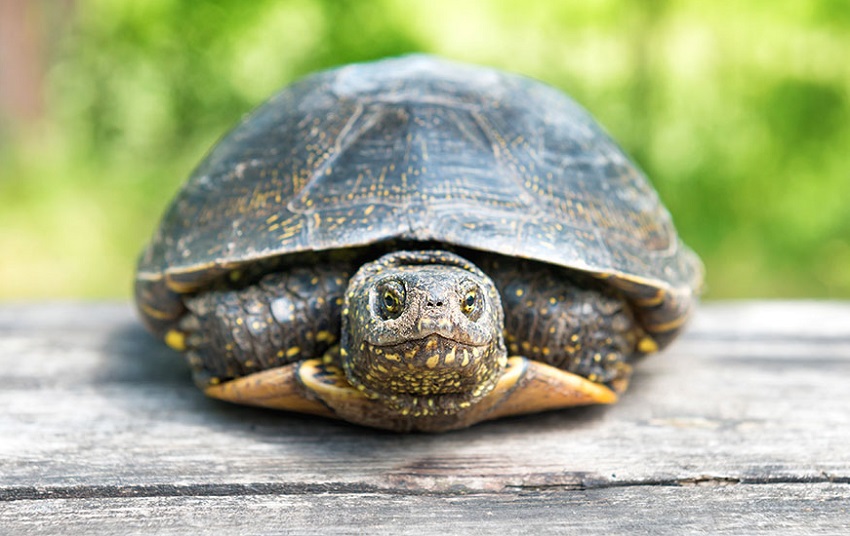
1.3. The Turtle’s Plastron Evolved Before Its Carapace
In 2008, paleontologists were shaken by an incredible fossil discovery in China. The specimen was very turtle-like, but it had only a plastron and no carapace; its back was still composed of ordinary ribs. Paleontologists named this creature Odontochelys; it lived about 220 million years ago, a full 10 million years before the primordial Proganochelys was found in Germany.
The fact that Odontochelys had a plastron but no carapace was strong evidence that the turtle’s plastron developed first, followed by its carapace.
The discovery of Odontochelys prompted paleontologists to re-examine another species, Eunotosaurus, in 2010. This species lived 260 million years ago in Africa, long before both Proganochelys and Odontochelys. Its fossil was found in 1892, but most experts at the time didn’t consider it a turtle ancestor because it lacked a shell. However, it had broad, flat ribs that modern paleontologists noted were very similar to Odontochelys.
In 2015, researchers found another primordial turtle species in Germany, which they named Pappochelys or “grandfather turtle.” This species lived 260 million years ago. It had broad ribs, and its sternum had begun to fuse but had not yet formed a complete plastron. This primordial turtle provided evidence for the transitional stage of turtles, from Eunotosaurus to the hard-plastroned Odontochelys.
These discoveries and studies have filled in the gaps in the turtle’s evolutionary history. However, a question remains: why would a turtle develop such a wide ribcage, which would slow it down? The shell must have had a purpose for it to have been developed.
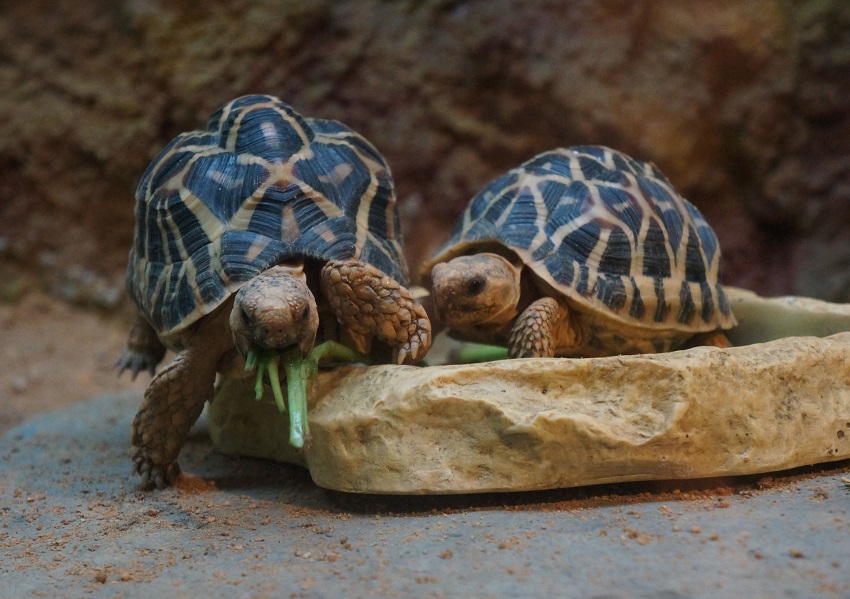
1.4. The Turtle’s Plastron Evolved to Aid Burrowing
In 2016, paleontologists re-examined the most distant ancestor of the turtle, Eunotosaurus, and made an interesting discovery. It had evolved to be a burrower. Its head was shaped like a shovel, its front limbs were stronger than its hind ones, and it had large claws. All of this indicates that these animals had a great digging career; they lived in and were excellent at digging burrows. This also explains why they had such a wide ribcage.
A wide, flattened body would have helped them brace themselves better when digging with their front limbs. With such a wide body and short legs, movement would have been difficult and slow. This made them more vulnerable and in need of protection. This is when their ribs began to fuse and became the shell that protects the entire body of modern turtles. Over time, the purpose of the turtle’s shell changed. It initially helped them build a better home, but now the shell has become their mobile armor and home, protecting them everywhere and at all times.
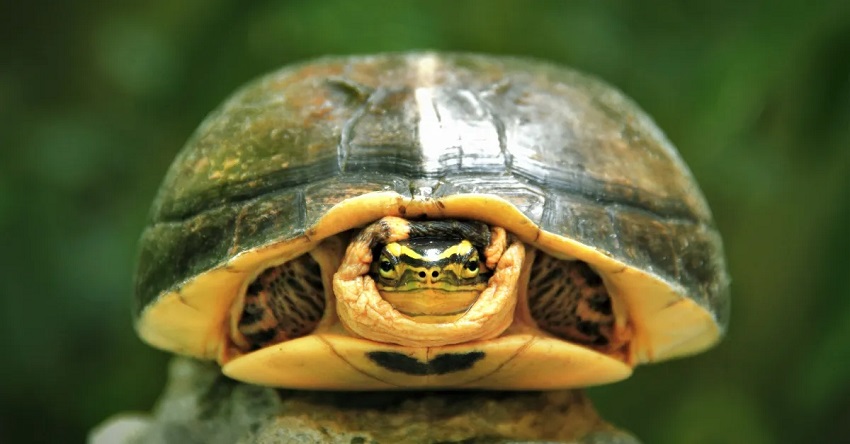
2. FAQs
1. Why do turtles have shells?
Turtles have shells primarily for protection. The shell acts as a shield against predators and environmental dangers.
2. Are turtle shells part of their body?
Yes, turtle shells are fused to their skeleton and spine, meaning they are a permanent part of the turtle’s body.
3. Can turtles live without their shells?
No, turtles cannot survive without their shells because it contains vital bones, nerves, and blood vessels.
4. Do all turtles have the same type of shell?
No, different turtle species have different shell shapes and structures, adapted to their habitats and lifestyles.
5. How do turtle shells help them survive in nature?
Besides protection, shells also help turtles camouflage, regulate body temperature, and adapt to aquatic or terrestrial environments.
This article has covered the evolutionary history of turtles, specifically how they developed their signature shell. We hope it has provided you with interesting information and answered the question, “Why do turtles have shells?” Thank you for your interest, and we wish you a lifelong love of science.
Reference: https://en.wikipedia.org/wiki/Turtle_shell


